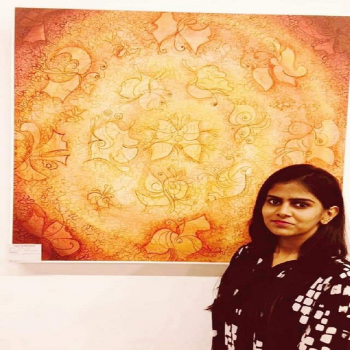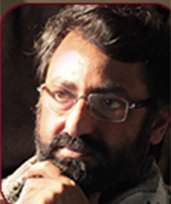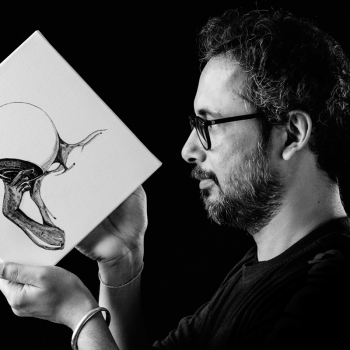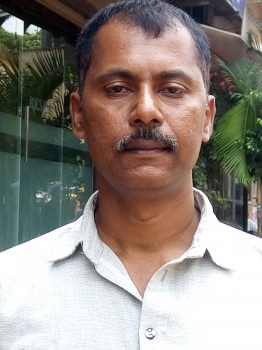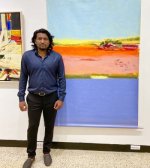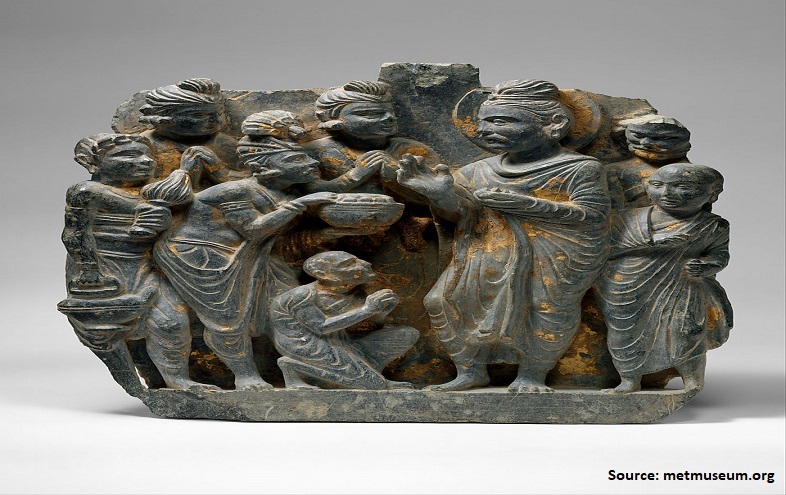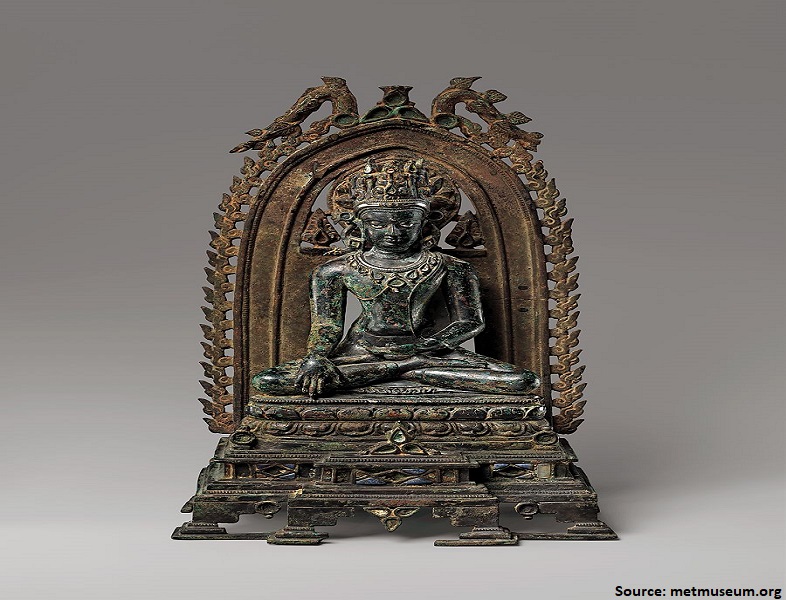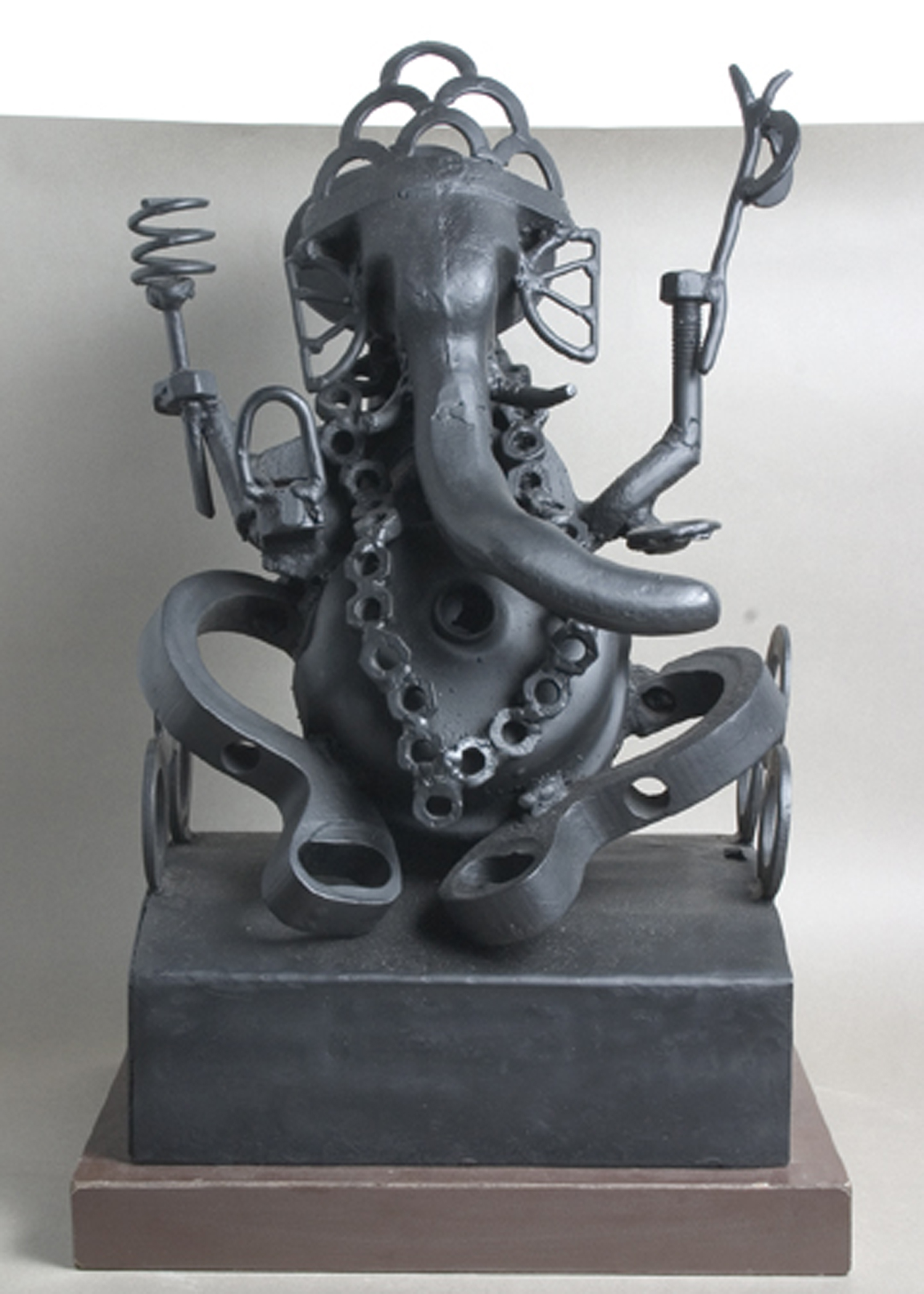
The history of Indian Sculptures is said to be linked to the era of Indus Valley Civilisation; dated to c. 3300- 1300 BCE. While they were the very first kind of ‘Art Form’ which came into existence, the evolving art became more form-oriented.
Indian sculpture art has been favored as one of the important mediums of artistic expression. This also includes architecture and a bit of painting as well. The Indian sculptures turned out to be a medium of depicting the lifestyle and culture of an area, and most importantly of the people residing there.
Post the 10th century onwards, sculpture art can not be studied as an individual subject because of the great involvement of society and development- but one must consider it to be of total importance and its contribution. As per expert historians and artists, the Indian sculptures and their subject matter is said to be invariably religious. Most of the time, its inspiration is intended to enrich one’s appreciation.
Indian Sculptures That Made A Mark
India is known to hold a variety of sculpture art- depicting the Indian Culture along with a varied significance. Some of such famous sculptures in India are:
1.The Dancing Girl, Mohen Jo Daro, c. 2500 BC-
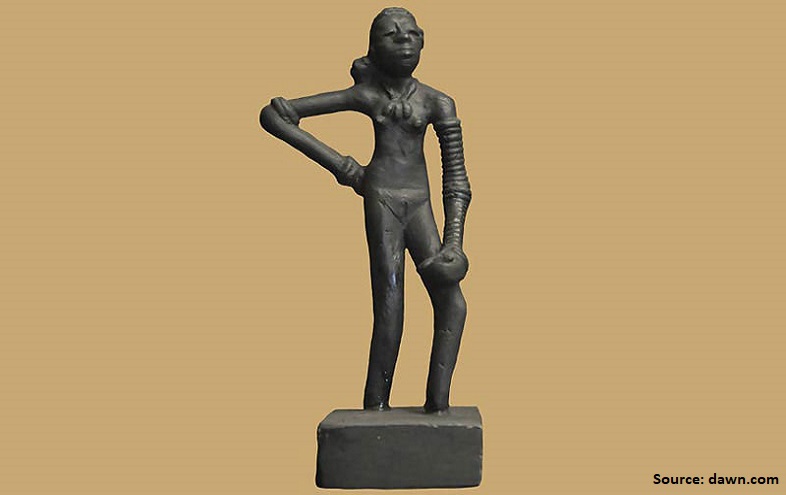
The sculpture of the popular 'Moving Girl', observed to be in the hours of Harappa. The sculpture, in bronze, is 10.5 centimeters (4.1 in) tall and portrays an exposed young lady or young lady with adapted extents remaining in a certain, naturalistic posture. Moving Girl is very much viewed as a show-stopper, and is the social antiquity of the Indus Valley Civilisation. The sculpture is viewed as one of the most seasoned and sublime works of art to this day. It is totally important to interpret the beginning of the First Civilization and the settlements in the Indian Subcontinent.
2.Ashoka Pillar, Sarnath, third Century B.C.-
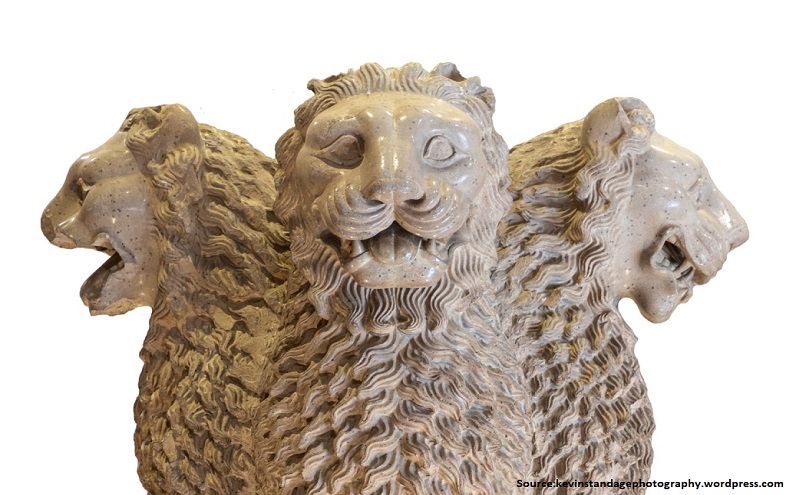
The most praised capital (the four-lion one at Sarnath (Uttar Pradesh)) was raised by Emperor Ashoka around 250 BC. likewise called the "Ashoka Column". Four lions are situated one after the other. At present the Column stays in a similar spot though the Lion Capital is at the Sarnath Museum. This Lion Capital of Ashoka from Sarnath has been embraced as the National Emblem of India and the wheel "Ashoka Chakra" from its base was set onto the focal point of the banner of India.
3.Buddha Statue, Sarnath-
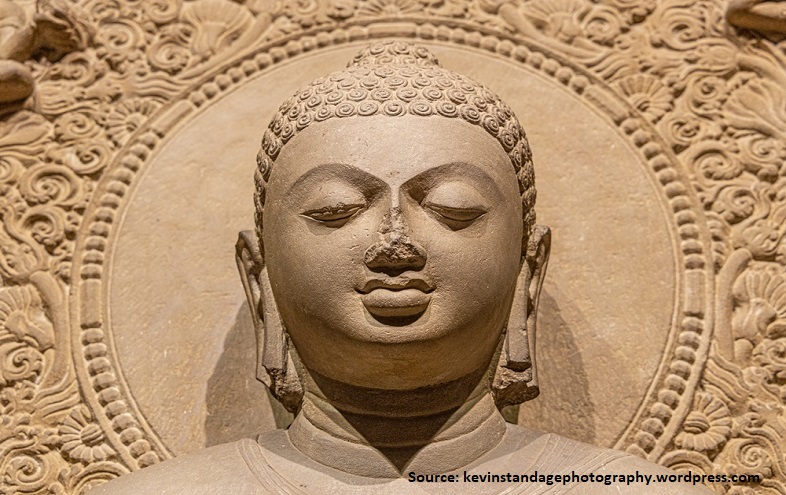
The figure of Gautama Buddha conveying his first message in the deer park at Sarnath. He lectured the Four Noble Truths, the center way, and the Eightfold Path. In the sculpture, he is situated in Padmasana with his right hand turning the Dharmachakra, laying on a Triratna image, flanked on one or the other side by a deer.
4.Nataraj, Chola Bronze Sculpture-

The renowned Shiva Dance-Nataraja and the bronze figure of the Natatraj of the Chola time frame is perhaps the main strict sculpture, and observing the height even today. Made with the Lost wax strategy, the Chola bronzes unite the specialty of metallurgy and the style of the hallowed and the sensuous dance in an amazing manner. Chiseling as craftsmanship has developed to such a ton more noteworthy degree since the pre-notable occasions, and today a ton of varieties can be found in this, as far as materials, tasteful, and even subjects. The artists are more significant nowadays and that can be found in the establishments today.
Ancient Indian Sculptures - The History
The onset of sculpture art began in India; midst the Indus Valley Civilisation that was spread to the parts of Afghanistan and Pakistan. Other locations that were encompassed were North-West India and Rajkot.
Excavations were done at the site of Indus Valley in the era of Mohenjo Daro and Harappa brought a large number of Terracotta sculptures to the site. It depicted images of female dancers, animals, deities, and foliages. Apart from all this, the most famous Indus Valley sculpture is that of The Dancing Girl of Mohenjo Daro. Other contemporary master Indian sculptures are the Ram In A Thicket from the Mesopotamian Era, dated back to 2500 BCE.
Ajanta Caves (c.200 BCE - 650 CE)
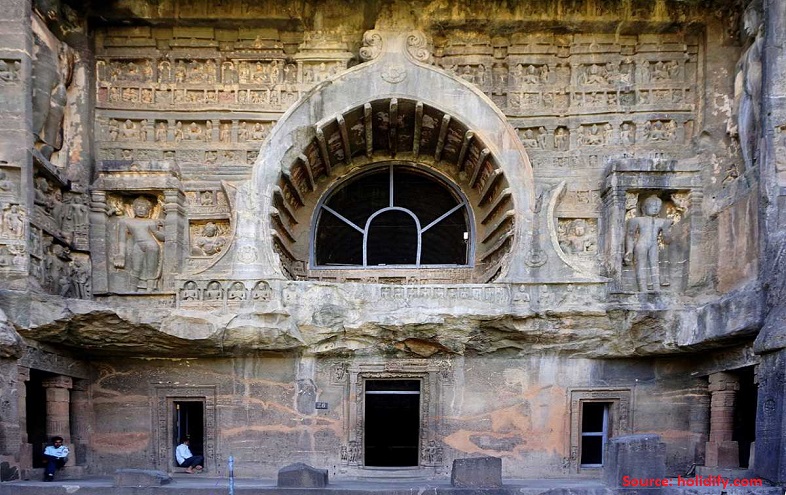
Situated in a far-off valley in the Aurangabad locale of Maharashtra, Western India, the Ajanta Caves are world-renowned for their cavern craftsmanship - artworks and carvings delineating the existence of Buddha. There are around 29 stone-cut caverns altogether, five of which were utilized as sanctuaries or petition lobbies, and 24 as cloisters. The earliest date is from the second and first century BCE; more caverns were cut and adorned during the Gupta Empire (400–650 CE). The parietal craftsmanship at Ajanta incorporates the absolute best show-stoppers of Buddhist iconography in India. Notwithstanding various peaceful sculptures of Buddha, the Ajanta models incorporate perplexing pictures of creatures, heroes, and gods while the canvases portray stories of old elegant life and Buddhist legend. At long last deserted around 650, for the Ellora buckles approximately 100 kilometers (62 miles) away, the Ajanta Caves were progressively forgotten until 1819, when they were incidentally rediscovered by a British officer during a tiger-chase. Since 1983, the Ajanta Caves have been a UNESCO World Heritage Site.
Kushan Empire Sculpture (first to sixth century)
After Ajanta, the following two unmistakable schools of Buddhist visual workmanship arose during the Kushan Empire in eastern Afghanistan, Pakistan, and north-western India, during the first century CE. The first, known as the Gandhara school (prospered first the fifth century), was based on Peshawar - previously a significant focus of the Greco-Bactrian realm - and later at Taxila, in the Rawalpindi area of the Punjab region in Pakistan; the second, found south of New Delhi in Uttar Pradesh, was the Mathura school (thrived first sixth century). Their importance lies in the way that they gave Buddha a human figure. As of recently, regardless of India's rich custom of allegorical workmanship, Buddha had never been addressed by a human picture, yet simply by images. To underscore his godlikeness in this manner, the ordinary Kushan sculpture of Buddha was commonly colossal, with a radiance around his head, and the dharmachakra engraved upon the palms of his hands and the bottoms of his feet. Albeit the two schools contrasted in the subtleties of their Buddhist figures, the overall pattern in the two was to move away from a simply naturalist plan and toward a more glorified picture.
The Gandhara school was noted for its Greco-Roman style of Buddhist figure, mostly because of the victories of Alexander the Great in the locale and the subsequent tradition of Hellenistic craftsmanship (c.323-30 BCE), just as the dynamic exchange between the domain and Rome. Acquiring vigorously from the traditional Greek model just as a Roman figure, Gandharan craftsmen portrayed Buddha with a young Apollo-like face, complete with a Roman nose, wearing robe style articles of clothing like those seen on Roman majestic sculptures. Greek acanthus foliage beautification was one more well-known element, as were seraphs bearing wreaths. The most well-known material utilized by Gandharan stone workers was dull dim or green phyllite, dark blue mica schist, or earthenware. Conversely, the Mathura school is related to local Indian practices that accentuated adjusted or curvy bodies decorated with the negligible dress, regularly cut out of mottled red sandstone from neighborhood quarries. The average Mathuran standing Buddha - got from the prior yaksa figures - radiates colossal energy. The more normal Mathuran situated Buddha is described by expansive shoulders, amazing chest, shaven head, round grinning face, right arm brought up in consolation, left arm laying on the thigh, and tight curtain organized in folds over the left arm, leaving the right shoulder uncovered. Altogether, the same as the admired Buddha sculpture that at the appointed time turned into the standard portrayal all through the world.
Elephanta Caves (550-720 Century)
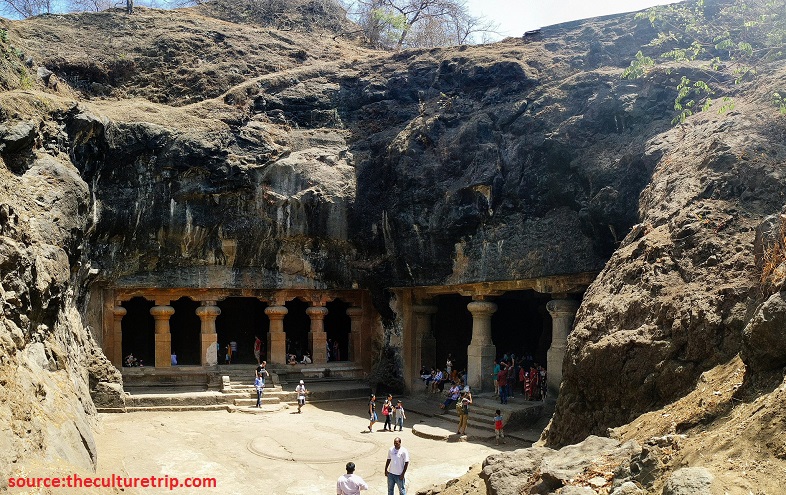
Rock-Cut Elephanta Caves, which were created in the 5th and the 8th century, are known to be a set of complex rock-cut basalt caves in Mumbai Harbour’s Elephanta Caves. While the caves are divided into two variant groups- one is a group of five caves that are purely dedicated to the Hindu god Shiva; the second one is a smaller group of two caves that belong to Buddhists. The last (Hindu) cavern to be in dynamic use was deserted during the sixteenth century. Some portion of the complex was redesigned during the 1970s, and in 1987 was assigned a UNESCO World Heritage Site. The Elephanta Caves are known specifically for their Hindu stone workmanship, including models of many figures from the Hindu pantheon, for example, Shiva, Vishnu, Parvati, Brahma, Ravana, and Shiva's elephant-headed child Ganesha.
The main figure in the caverns is the Trimurti (or Maheshmurti), set profoundly into a break at the rear of the cavern inverse the passageway. Portrayed by one researcher as a "magnum opus of Gupta-Chalukyan craftsmanship", the 20-foot high Trimurti is a help cutting of a three-headed Shiva, whose three heads (Ardhanarishvara, Mahayogi, and Aghori) represent the three crucial parts of Shiva: creation, insurance, and obliteration. Different features include an engraved board showing Shiva killing Andhaka; a picture of Shiva sitting like Buddha in a leg over leg Yogic position while doing atonement after the demise of his first spouse Sati, who was later renewed as Parvati; a board showing Shiva getting hitched to Parvati, watched by Brahma, Vishnu, Indra, and different gods.
Ellora Caves (600-1000 Century)
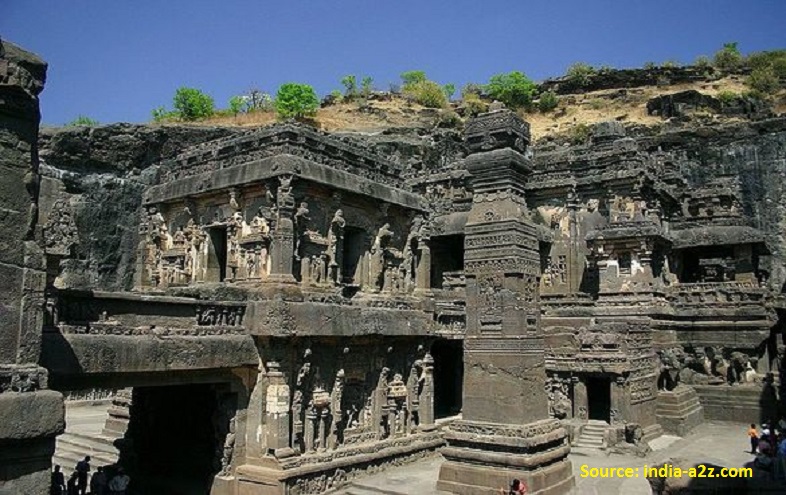
Known to hold a collection of thirty-four various structures, Ellora Caves is spread to about two kilometers in the vertical basalt face of Charanandri Hills of the northwest part of Aurangabad, Maharashtra. Various Hindu and Jain religious faiths are celebrated at the Elloras; Buddhists also. Built in the era of the Rashtrakuta Dynasty, the Ellora Caves and its site is inclusive of the oldest structure from the Buddhist caves, five Jain, and Seventeen Hindu caves.
Strangely, albeit all are sumptuously embellished with rock carvings, the Buddhist and Jain caverns appear rather calm and thoughtful, while the Hindu corridors appear to resound with energy. The last is noted specifically for the "Cave of the Ten Avatars", and the Kailasha Temple - which incorporates a regular sanctuary flanked by elephants cut out of the stone - with its popular model of Ravana endeavoring to lift Mount Kailasa, the Himalayan mountain home of Shiva. The Jain Caves are similarly huge, lavishly beautified, and mark the last period of movement at Ellora, which is presently a UNESCO World Heritage site.
Pala Buddhist Art (eighth twelfth century)
The Pala line (in Sanskrit, "Pala" signifies "defender") applied power over the present-day territories of Bihar and West Bengal in eastern India, just as the area of Bangladesh, from the eighth to the twelfth century. The Pala school of the figure is viewed as an unmistakable period of Indian craftsmanship, made by the imaginative inventiveness of Bengal stone carvers across the district. It is noted essentially for its bronze Buddhist sculptures and dolls, made by the lost wax measure and including an amalgam of up to eight metals.
Portraying different divinities, they are regularly little and versatile and planned essentially for private love. The style is suggestive of the Gupta custom created at Sarnath, however, Bengal specialists added an unmistakeable erotic nature. Figures are more full, more adjusted, and pass on a specific exquisite virtuosity. The main habitats of creation for this mobility craftsmanship were the Buddhist religious communities at Nalanda and Kurkihar. Pala artists are likewise known for their stone model, regularly used to enhance divider specialties in Hindu just as Buddhist sanctuaries.
The Pala realm was one of the last fortifications of Buddhist culture in India, although by its decrease in the twelfth century Hinduism had become dominant. Up to that point notwithstanding, the religious communities and heavenly locales of the Pala area pulled in Buddhist pioneers, priests, and understudies from everywhere in Asia.
When these guests got back, they took with them a wide assortment of Buddhist workmanship, including Buddhist statuettes, represented compositions, drawings, and different kinds of craftsmanship related to Shakyamuni Buddha. Subsequently, Pala design specifically impacted the specialty of Nepal, Tibet, Burma, and Java.
Chola Bronze Sculpture of South India, Sri Lanka (ninth thirteenth century)
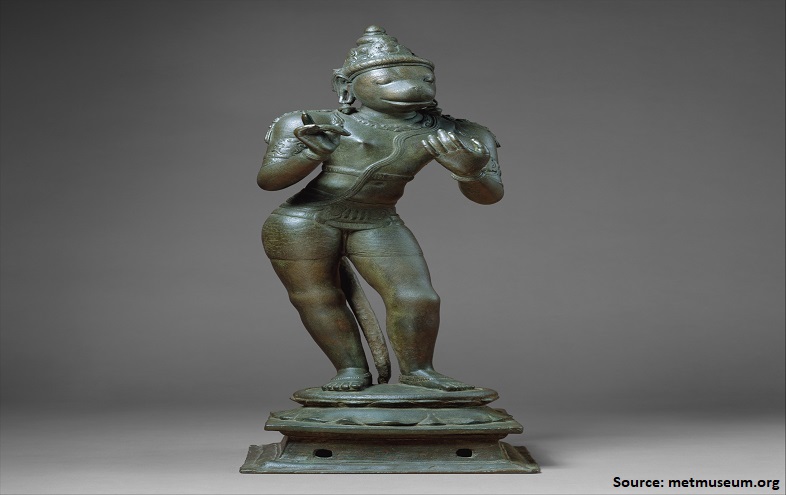
From the late ninth century to the late thirteenth century the Chola administration controlled quite a bit of south India, Sri Lanka, and the Maldive Islands from their base close to Thanjavur on the southeastern coast. Chola rulers were dynamic benefactors of human expression, and during their rule, they assembled various huge stone sanctuary buildings improved all through with stone carvings of Hindu divinities. Be that as it may, Chola workmanship is most popular for its sanctuary bronze figure of Hindu divine beings and goddesses, a considerable lot of which were intended to be conveyed in nearby parades during sanctuary celebrations. Cast utilizing the lost-wax strategy, Chola bronzes were respected for their sexy figures just as the detail of their dress and gems. It merits recalling that when these pictures were revered in the sanctuary or during processional occasions, they were sumptuously enhanced with silk fabric, laurels, and gems. The Chola style of the model was significantly appreciated for its polish and beauty, however, particularly for its imperativeness - a trait passed on through look, stance, and development. Even though the bronze model was grounded in south India before the Cholas, a lot more prominent number of bronze sculptures were made during the Chola time frame. Chola Hindu model provides innumerable figures of Shiva, frequently joined by his associate Parvati; Vishnu and his partner Lakshmi; the Nayanmars, other Saiva holy people, and numerous other Hindu divinities.
Mughal Relief Sculpture
From 1526 until 1857, quite a bit of northern India was controlled by the Mughals, Islamic rulers from Central Asia. During this period, the vital imaginative action was painting, while metalwork, and ivory cutting just as marble form likewise prospered. The nature of Mughal stonework is exemplified by various complicatedly cut sandstone screens.
The Mughal Emperor Akbar was an excited supporter of stone cutting. He appointed sculptures of Jai Mal and Fateh (Rajput legends of Chittor) shown sitting on elephants, to monitor the door of the Agra Fort. Head Jahangir raised two life-size marble sculptures of Rana Amar Singh and his child Karan Singh in the castle garden at Agra.
As a general rule, Mughal rulers were incredible admirers of help mold (counting dynamic work just as naturalist portrayals of blossoms, butterflies, bugs, and mists) which was viewed as a fundamental component of Mughal engineering, and adorned their structures with a wide assortment of this sort of improving craftsmanship: a model being the 50 assortments of marble cutting on the dividers of Akbar's burial chamber at Sikandra.
Indian Modern Sculptures
Auguste Rodin is considered the organizer of Modern Art Sculpture. It is said that the insurgency for Modern craftsmanship Sculpture initially began in the year 1900 in the Universal Exhibition which was held in Paris where Auguste Rodin previously addressed his advanced workmanship named The Thinker, Balzac, Burghers of Calais, The Gates of Hell, and Victor Hugostatues. Pablo Picasso was one of the renowned cubist craftsmen that addressed one more type of present-day workmanship design. Land craftsmanship, calculated workmanship, conceptual expressionism, mathematical deliberation were all different structures that emerged through developments every now and then. Post-1950s, the advanced workmanship mold began to take a blast and got famous among the general mass as a dynamic and allegorical structure. With time Modern Art has changed a great deal and presently the current figure can offer shape to any creative mind. These days current figures that are accessible have different implications and are made out of different materials that command the notice of individuals. Eminent nursery figures can be found in each city these days.
Current Art Sculpture has added a few non-conventional structures which incorporate natural craftsmanship, land workmanship, road craftsmanship, dynamic model, site-explicit workmanship, Garden Sculpture, Sound figure, and light model. Current Art Sculpture has consistently been a significant type of public craftsmanship depiction.
Nursery Sculpture-Basically Garden Sculpture is a type of current workmanship. An open-air garden is devoted to making the introduction of a figure. You can likewise name it as site-explicit model work where figures can be made out of a few molds or materials, like fiber or normal grass and plants. These days in huge urban communities, you can discover such nursery molds that add to the best style of the city.
Lock-on or Street Sculpture-Lock-on is a well-known type of present-day craftsmanship form. In this classification, you will discover design appended or introduced through any open furnishings or side of the road stand like a post. Road figures are comprised of different materials like polystyrene, wood, plastic, reused materials, concrete, iron, and so forth
Ecological Art/Sculpture-Environmental figure is one more type of current craftsmanship design that addresses different structures or periods of the climate in a creative manner. The materials used to make the model are regular and biodegradable. This is otherwise called Landscape painting.
Public Art-Public craftsmanship can be executed in any media and can be arranged publically. The principle content of public workmanship is the subject and generally requested from any local area or administering body to portray any message. A wide range of materials can be utilized to raise such figures.
Light and sound model is the absolute best method of current work of art where figures and pictures are set by means of sound or light impacts.
Read more: Spectacular Indian Sculpture Artists of Modern Era
Wrap up:
While we all focus on all our roots of Indian art and sculptures, making sure that we get the best Sculpture art for our homes is a must. You can get some amazingly created wall sculptures available online in India from Indian Art Ideas. They not only have experts with the best hands in art but also ensure that you are able to learn the utmost with them.











